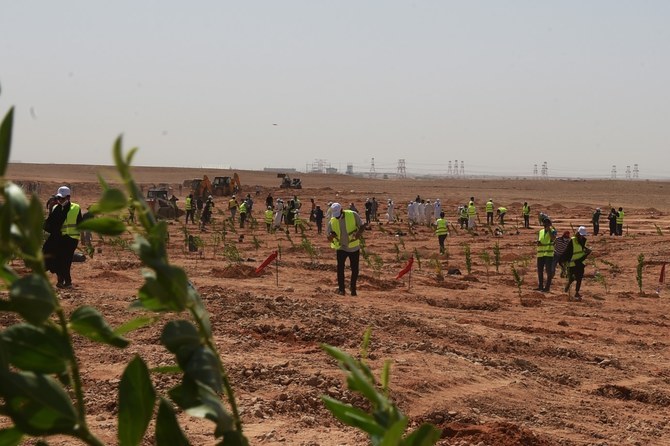
Saudi Arabia is placing sustainability front and center, with renewable energy a key driver in its economic diversification and transition to a cleaner, greener future.
Major solar and wind-powered projects are already operational, with the aim to produce 50 percent of power from renewables by 2030. The recent announcement to achieve net-zero carbon emissions by 2060 means there will be an intense focus on renewable energy in the Kingdom, and this will be achieved in part using green hydrogen — a renewable energy source still in its infancy in terms of global adoption but that promises great potential in the Kingdom.
Green hydrogen, which is produced by water electrolysis using renewable electricity, is one of the levers that will speed up the decarbonization of industries. It will play a key role in reducing carbon emissions in sectors and industries that are hard to decarbonize, such as the chemical industry and heavy-duty mobility. According to studies by the Hydrogen Council, the global market is expected to multiply by 10 by 2050.
Green hydrogen improves the integration of intermittent renewable energies, such as solar and wind. Renewable electricity can be transformed into green hydrogen and then synthetic fuels (power-to-gas). This is helpful both in terms of optimizing the use of gas networks and underground storage, as well as contributing to a cost-effective energy transition.
Despite use of the energy source being at its early stage, we expect it to become a key part of Saudi Arabia’s renewable transition. Studies suggest that Saudi Arabia will be in the top three cheapest green hydrogen suppliers globally due to its huge renewable potential and existing infrastructure to manage large exports volume. Despite the consumption market being relatively low, the export potential of the nascent industry is very exciting.
How will we unlock the potential of green hydrogen in our country? The government is leading the way on green investment by tangibly demonstrating its commitment to sustainability and a cleaner future through many major active projects. We can expect to see more joint leadership between the public and private sectors. These partnerships enable large-scale projects, including funding, knowledge sharing and jobs creation. This is how we at ENGIE operate in the Kingdom, for example, assuming the role of both investor and developer.
In order to realize the export potential of green hydrogen, we should also consider the opportunities that cross-country collaboration can bring by helping to create a clear vision and rollout plan of the infrastructure to be developed and integrated. The most economical way to transport renewable energy is in gas form, particularly with longer distances between production and consumption basins. In the longer term, we need to ensure cross-country infrastructure can support this.
Today, the cost to produce green hydrogen is higher than carbon alternatives. However, international experts, including the Hydrogen Council and the International Energy Agency, believe that this gap could be eliminated as early as 2030. This will be due to a reduction in the production costs of renewable electricity (photovoltaic energy, offshore) and the productivity gains that could be achieved in the electrolysis part (thanks to massification). Saudi Arabia is already performing well, given the low cost of renewable energy production in the Kingdom. However, it is important that we also look more broadly at the value chain to understand the economic and environmental benefits of green hydrogen.
In reality, some countries and regions will not be able to rely on renewable energy (such as Japan, South Korea and Central Europe) whereas others, like Saudi Arabia, are likely to have a surplus. We may only be at the start of our green hydrogen journey in the Kingdom, but we are excited at the prospect it brings not only in terms of the economy but in terms of our role in enabling a greener future globally.












